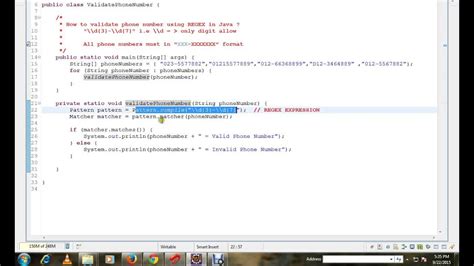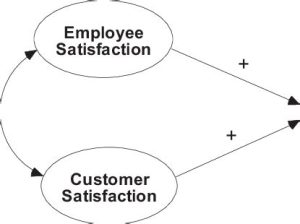
Learn advanced regex techniques for phone number validation, including pattern exploration, custom validations, lookarounds, and practical testing methods. In a world teeming with online forms and digital communication, ensuring accurate data collection is paramount, especially when it comes to phone numbers. Advanced techniques for phone number regex validation come into play as a critical tool for developers and data scientists alike.
In this comprehensive blog post, we’ll delve deep into the mechanics of regular expressions, an incredibly powerful feature of programming languages that allows for pattern matching and manipulation of text. From exploring the myriad phone number patterns that span the globe to constructing your own custom validation sequences, we’ll cover the ins and outs of taming these numerical strings. We’ll also venture into more sophisticated territory with lookahead and lookbehind assertions to refine our regex skills further. By the end of this post, you’ll be equipped to test and validate regex patterns with a level of finesse that ensures your data’s integrity and usability.
Understanding Regular Expressions
Regular expressions (often abbreviated as regex or regexp) are a powerful and versatile tool for searching, matching, and manipulating text and data; they offer a highly efficient method for describing complex patterns that enable software developers and data analysts to perform elaborate tasks with relative ease.
In the intricate art of pattern matching, regular expressions serve as the cornerstone, empowering users to sieve through immense volumes of data to identify specific sequences or formats that correspond to predefined rules, such as validating email addresses, IP addresses, or in our current context, phone numbers.
When it comes to parsing and validating strings, regular expressions reign supreme, a language within a language, offering a syntax full of symbols and characters that at first may seem impenetrable; however, upon closer examination, one discovers an array of powerful operators that can be combined to define intricate rules with precision and flexibility.
Mastering regular expressions is akin to acquiring a Swiss Army knife for text processing tasks, where one can utilize metacharacters, quantifiers, and capturing groups to create patterns that match a variety of string formats, a fundamental skill especially pertinent in fields requiring data cleansing, string manipulation, or in our specific case, ensuring that phone number inputs adhere to particular regional or international standards.
With advancing technology and growing demands for data accuracy, the importance of regular expressions cannot be overstated; they are not merely a feature of programming languages but a quintessential skill for any IT professional aiming to refine their toolkit for managing and validating strings, exemplified by the processes we are about to discuss further regarding phone number regex validation.
Exploring Phone Number Patterns
Delving into the intricacies of phone number patterns, one may quickly realize the importance of establishing a comprehensive understanding of the varying formats and conventions used across different countries and regions. As we embark on this journey of exploration, it becomes evidently clear that a one-size-fits-all approach is not feasible when it comes to crafting regular expressions (regex) for phone number validation.
In the realm of telecommunications, a plethora of formats exist, ranging from the standard North American 10-digit format, which typically includes a 3-digit area code followed by a 7-digit local number, to international numbers that come with their own unique set of country codes and local nuances. To further complicate matters, phone numbers may be presented with or without country codes, might include various separators such as dashes, dots, or spaces, and sometimes are wrapped with parentheses, especially in the case of area codes.
When constructing a regex pattern for matching these diverse phone number configurations, the developer must be sagacious, taking into account not only the array of formats but also the potential presence of optional elements within a number sequence. For instance, certain phone numbers may incorporate an extension denoted by a ‘x’ or ‘ext’, followed by a series of additional digits, necessitating a regex that is both flexible and rigorous enough to authenticate a variety of potential scenarios.
To adeptly navigate this sea of possibilities, it is essential for technology enthusiasts and professionals alike to familiarize themselves with advanced regex techniques such as character classes, quantifiers, and grouping constructs which enable the parsing and validation of complex phone number patterns with precision and efficiency. Without these tools at one’s disposal, the task of constructing a versatile and reliable phone number regex could easily become a vexing endeavor.

In conclusion, the quest for mastering phone number regex patterns is a testament to the detail-oriented nature of software development where meticulous attention to the multitudinous details is paramount. Only through exhaustive analysis and thoughtful implementation of regex principles can one hope to attain a level of competence capable of conquering the challenges posed by international phone number formatting and validation.
Building Custom Validation Patterns
When it comes to ensuring the integrity of data being entered into a system, having a robust set of custom validation patterns becomes crucial. Whether for email addresses, passwords, or in our case, phone numbers, setting up an accurate validation pattern can be the difference between a seamless user experience and a chaotic data handling scenario. These patterns help to standardize the input format, streamline data processing, and reduce the risk of erroneous entries in databases.
As a developer, you might find yourself in a situation where predefined validation rules don’t quite suit the unique needs of your application; perhaps the phone number format you’re trying to validate has to comply with a regional standard or an unconventional formatting schema. Here, understanding how to construct a custom validation pattern with regular expressions, or regex, becomes vital. A regex pattern consists of a sequence of characters that outline the syntax rules the input must follow to be considered valid.
Creating a custom regex pattern for phone number validation is not a task to be taken lightly; it demands both precision and a deep understanding of the potential variations in phone number formats. This nuanced approach allows the system to cater to international numbers, include an optional country code, account for various separator symbols like dashes or spaces, and even handle different area code lengths without compromising the validation’s strictness or flexibility.
Moreover, incorporating advanced regex components such as quantifiers, anchors, and character classes strengthens the custom validation pattern to account for a range of scenarios. These building blocks give you the power to construct intricate patterns capable of picking out precisely the format you want while ruling out any invalid configurations. In tackling such complexity, a regex tester or a visual regex tool becomes indispensable to visualize and test the custom validation patterns iteratively, ensuring accuracy and effectiveness before deploying them into the live environment.
Conclusively, the art of Building Custom Validation Patterns necessitates both technical know-how and an eye for detail. By mastering regex for phone number validation, developers can provide an essential safeguard, preventing data corruption and enhancing the end-user’s data input experience. Thus, investing time in learning to craft refined, accurate phone number regex validations is not just a proactive step in data quality assurance, but also in crafting a smoother user interface that engenders trust and reliability in your application.
Implementing Lookahead and Lookbehind
When delving into the intricacies of regular expressions in the context of phone number validation, Implementing Lookahead and Lookbehind assertions emerges as a powerful technique that amplifies the capability of regex patterns to not only match but to also assert specific positions within a string. The unique feature of lookahead and lookbehind is that, while they facilitate conditional checking on specific patterns, they do not consume characters in the resulting match, enabling a form of zero-width assertion crucial for complex pattern recognition tasks in the realm of regex.
Essentially, a lookahead assertion allows for the inspection of the forthcoming segment of the string, enabling you to stipulate a condition that follows the current point in the regex traversal without including it in the main capture group; for instance, when validating phone numbers, you might use lookahead to ensure a number does not immediately follow a particular area code, supporting the differentiation between various national or regional numbering plans.
Conversely, lookbehind assertions offer a retrospective pattern check, providing the means to look back at the string and ascertain if a particular sequence precedes the current matching point, all the while not advancing the regex engine’s position; this can be especially beneficial when identifying number patterns that are prefixed by specific international or local dialing codes, thus assuring compliance with predefined formatting rules without disturbing the actual match needed for validation.
Moreover, the nuances of applying these advanced constructs are pivotal; for example, positive lookahead – expressed as (?=…) – stipulates that a certain pattern must follow, and negative lookahead – expressed as (?!…) – ensures that a pattern does not follow, which, in the scenario of phone number validation, could prevent matches that emulate phone numbers but are otherwise unrelated or formatted differently. The same principle applies to positive ((?
In conclusion, mastery of lookahead and lookbehind is key in crafting efficient and reliable phone number regex validation patterns, providing a significant advantage in the parsing and analyzing of complex string data. Adequate implementation of these techniques enables the creation of robust validation mechanisms that can precisely identify and confirm the accuracy of diverse phone number formats, ensuring high-quality data collection and verification in a plethora of applications.
Testing and Validating Regex Patterns
When it comes to ensuring the efficacy of regex patterns, especially those used for validating phone numbers, testing and validation are crucial steps that cannot be overlooked. By meticulously examining each regex pattern through a series of stringent tests, developers can significantly increase their confidence in the accuracy and reliability of their validation processes. Testing serves as the bedrock upon which the integrity of regex patterns is built, as it uncovers any potential flaws or edge cases that might otherwise go undetected.
In the realm of testing regex patterns, one of the foremost strategies is to employ a comprehensive test suite that encompasses a variety of phone number formats and scenarios. This would include international numbers with varying country codes, local numbers with diverse structures, and edge cases that defy standard conventions. It is essential to verify not only the correctness of numbers that should be accepted but also to ensure that invalid phone number formats are firmly rejected by the regex pattern to avoid false positives.
Moreover, when validating regex patterns for phone numbers, an iterative approach is often most effective. Developers typically begin with a general pattern and incrementally refine it by introducing additional constraints, such as length checks and permissible characters. This process of iterative refinement helps in crafting regex patterns that strike a fine balance between specificity and inclusivity—thereby tailoring the pattern to the unique requirements of phone number formats being validated.
Another vital aspect of testing and validating regex patterns is the use of regex testing tools and online regex validators. Utilizing these utilities provides immediate feedback on the appropriateness of a regex pattern and its behavior across different test cases. These tools often feature real-time matching, highlighting, and even explanations of how a regex operates, which can be invaluable for both novice and seasoned developers in diagnosing and resolving issues within their regex expressions.

To summarize, as we delve into advanced techniques of phone number regex validation, the importance of testing and validating regex patterns cannot be overstated. The meticulous process of examining, refining, and proving the correctness of regex patterns is a non-negotiable step in the development lifecycle that ensures robust and reliable data validation. Through rigorous testing and validation of regex patterns, developers can create efficient systems that adeptly handle the complexities of modernday communication formats.
Frequently Asked Questions
What is Regex and how is it used for phone number validation?
Regex, which stands for Regular Expression, is a sequence of characters that forms a search pattern. It is used for phone number validation by defining a pattern that phone numbers should adhere to, thereby allowing developers to match and validate phone numbers in their data.
Can you provide an example of a phone number regex pattern?
A simple example of a phone number regex pattern might be `^\\+?\\d{1,3}?[- .]?\\(?(\\d{3})\\)?[- .]?(\\d{3})[- .]?(\\d{4})$`, which matches various phone number formats with country code, area code, and local numbers.
Why is it important to use advanced techniques for phone number regex validation?
Advanced techniques are important because they ensure that the regex validation is comprehensive and accurate, matching the correct phone number formats and rejecting invalid ones, which is essential for data integrity and user experience.
Are there limitations to using regex for phone number validation?
Yes, limitations exist. Regex cannot verify if a phone number is actually in service or belongs to the correct individual. Also, overly complex regex patterns can become difficult to maintain and understand.
How do you handle different country codes and formats in phone number regex validation?
You can handle different country codes and formats by creating a regex pattern that includes optional matches for country codes and various local number formats. Alternatively, you can use libraries or services that provide regex patterns for different locales.
What are some best practices when writing regex for phone number validation?
Best practices include being as specific as possible without overcomplicating the pattern, considering country formats and number lengths, using non-capturing groups when appropriate, and thoroughly testing the regex with a wide range of phone number examples.
Is it better to create your own regex pattern for phone number validation or use a pre-built solution?
It depends on the use case. For standard phone number formats, using a well-tested pre-built solution can save time and reduce errors. However, if you have specific requirements or uncommon formats, creating a custom regex pattern might be necessary.

Leave a Reply